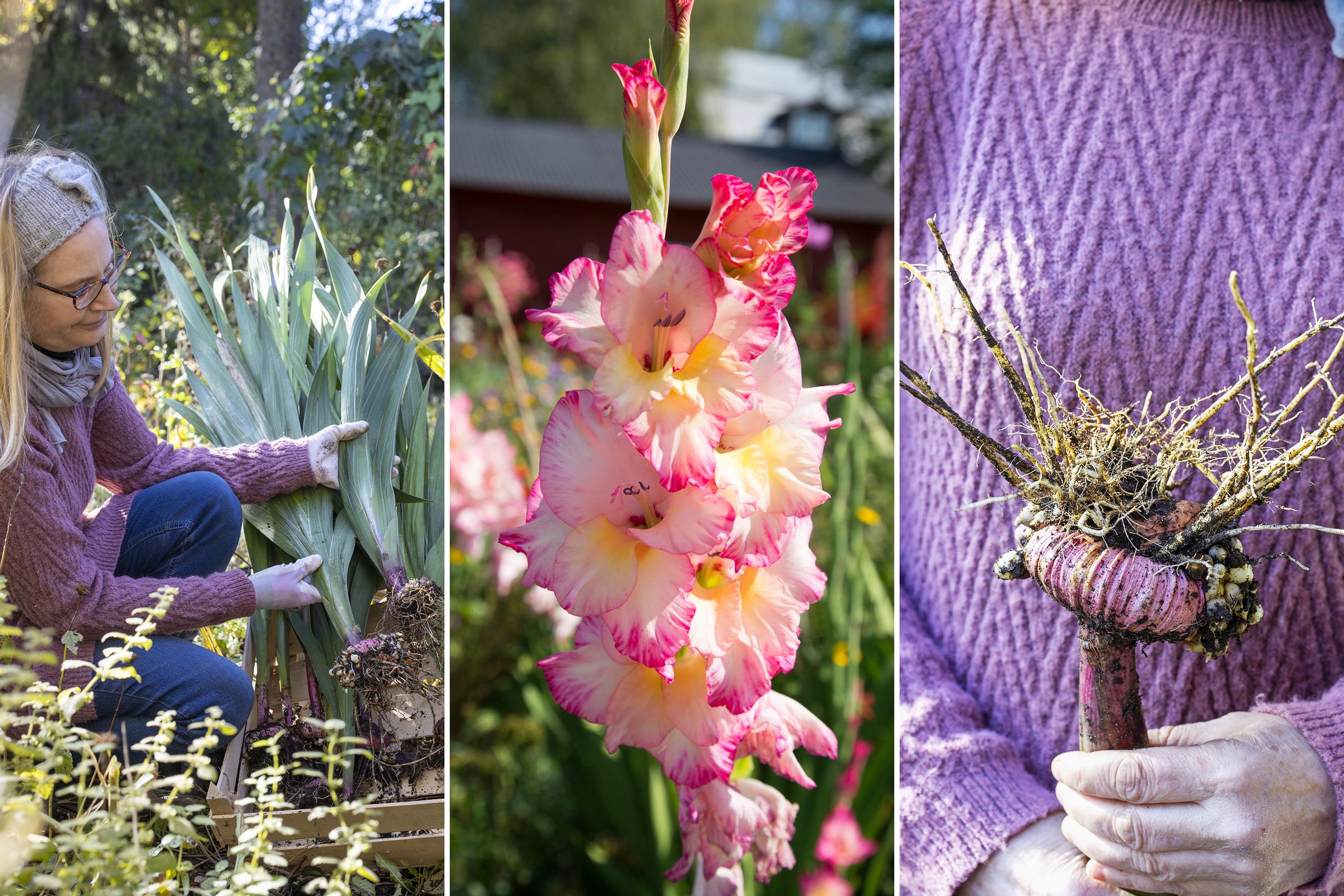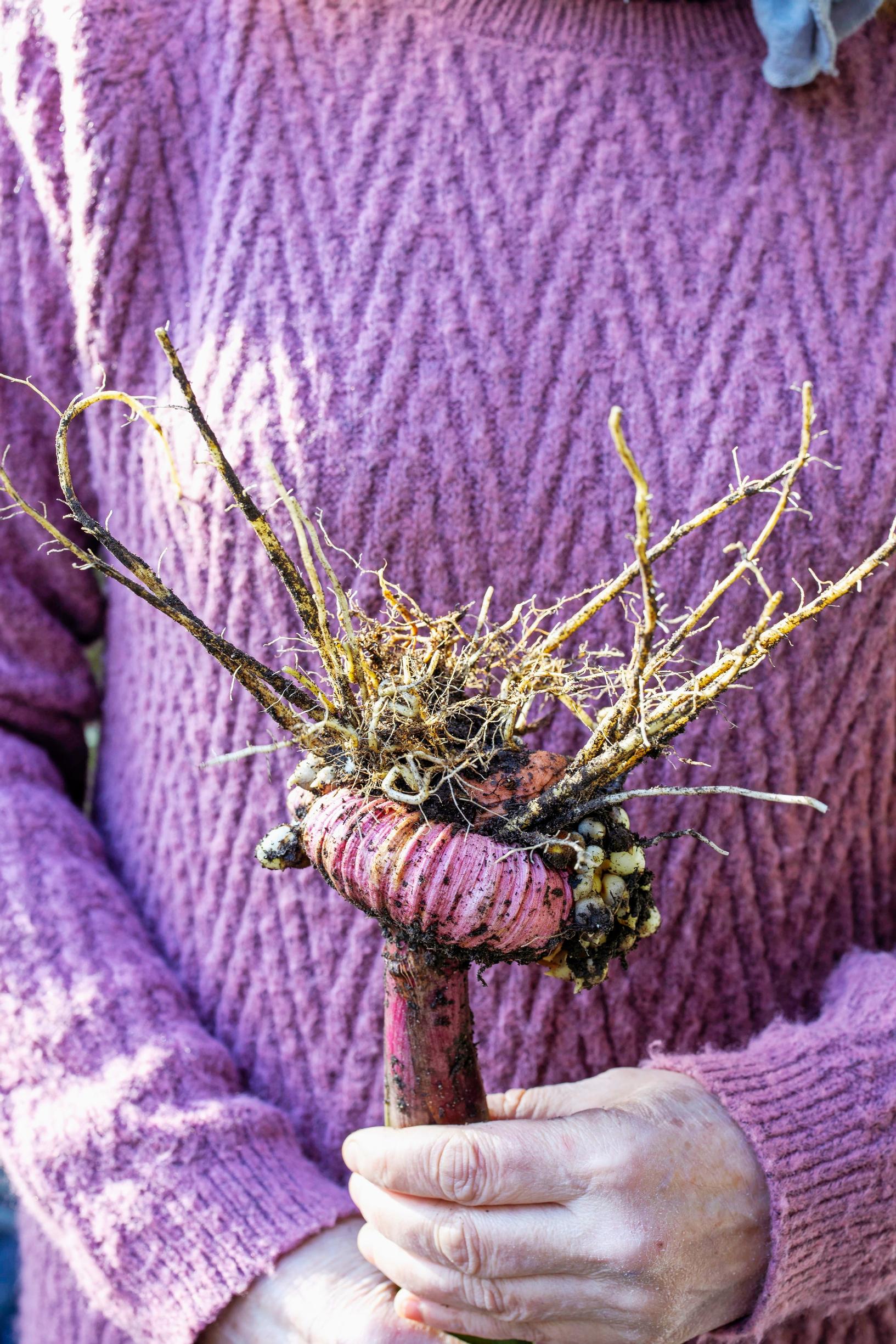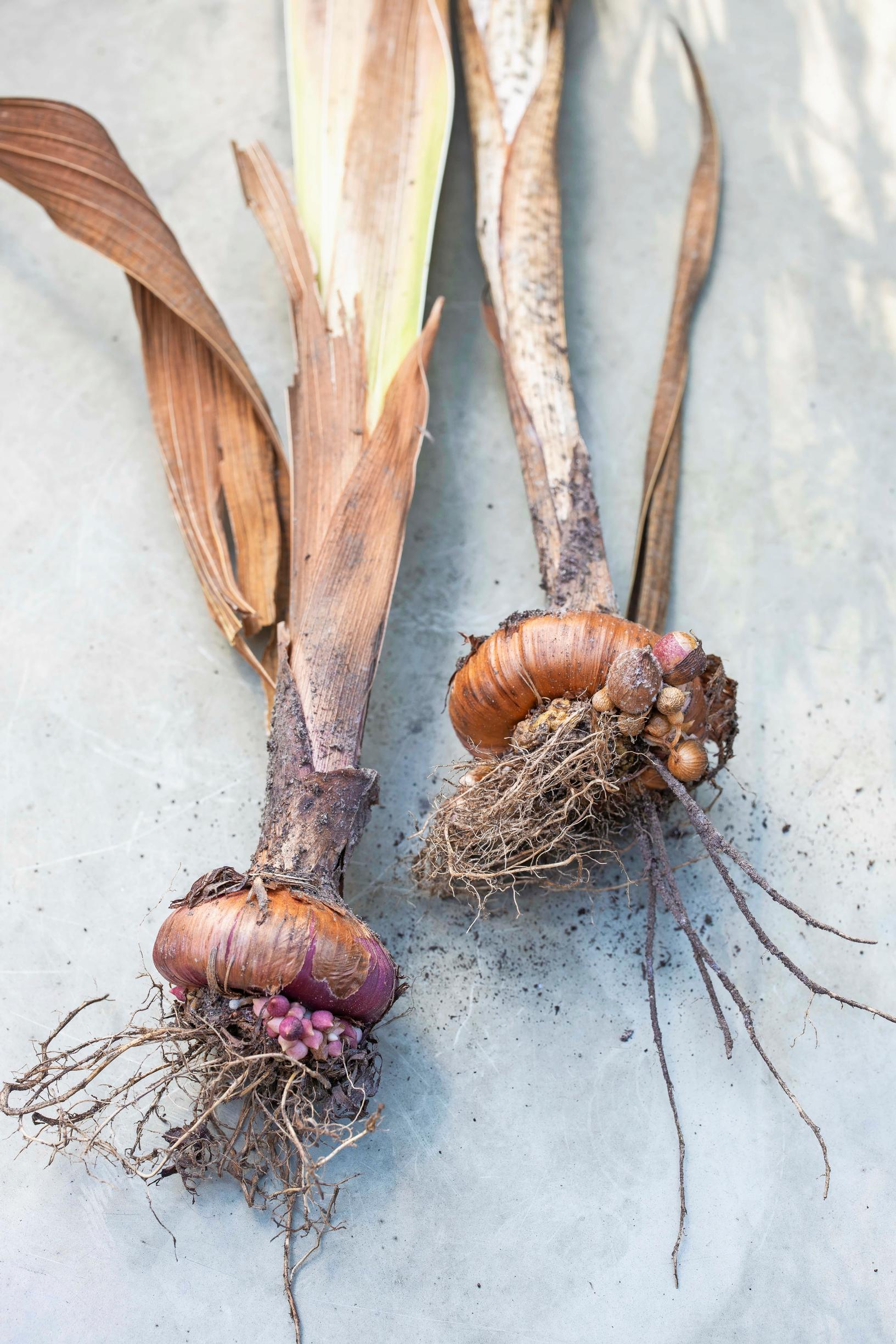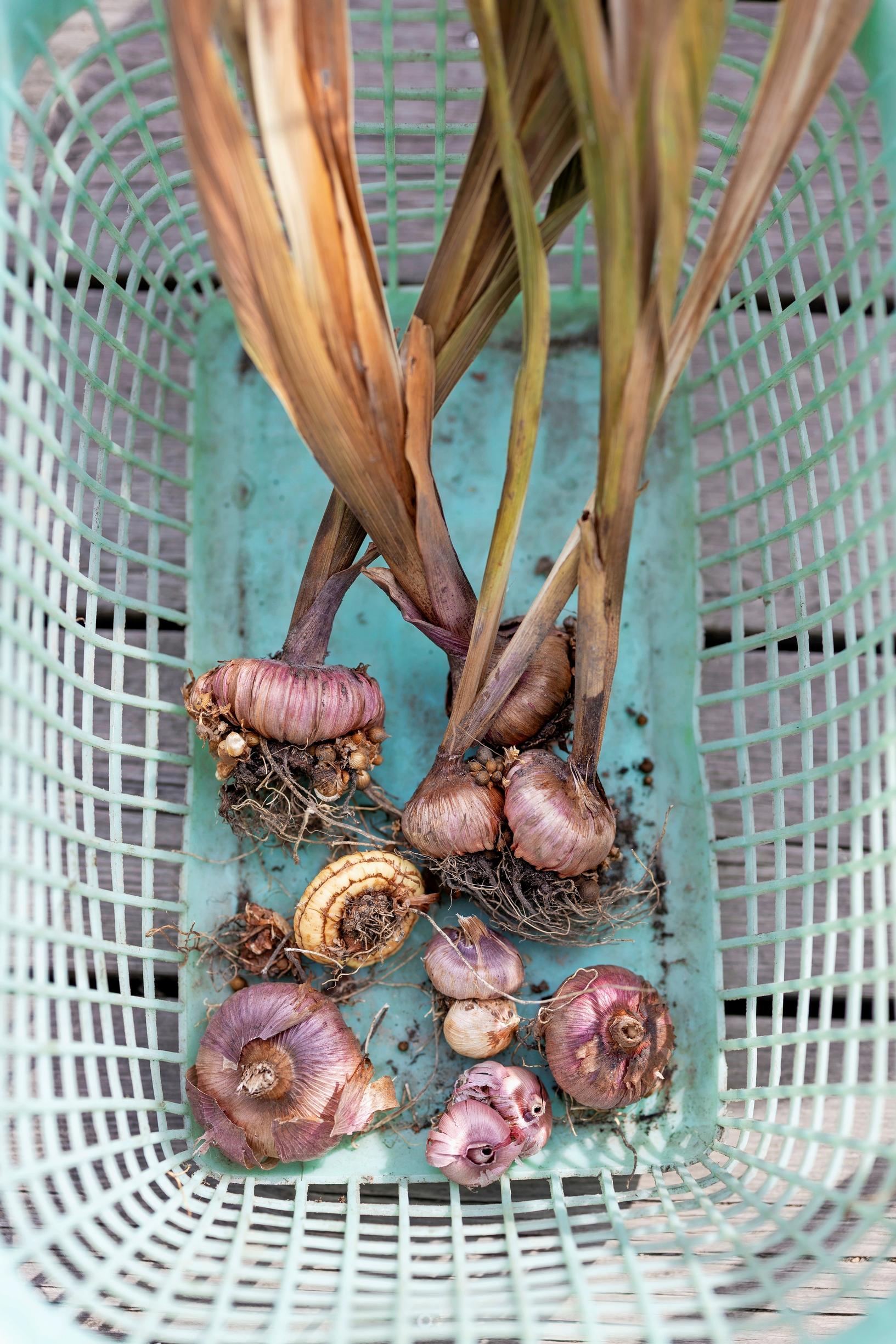
Gladiolus overwintering: when to lift corms and how to store them
Save the corms of your gladiolus so you can enjoy their vibrant blooms again next year. Horticulturist Outi Tynys shares her top tips for successful overwintering.
1. Don’t rush the lift
Let the cold first nip the leaves of your gladiolus before lifting them. Subfreezing temperatures will darken the leaves, but the corms remain safe in the ground. A later lift also shortens the corms’ storage period and helps them store better.

2. Use a garden fork
Gently lift the corm from the ground using a garden fork. If you pull on the leaves, the stem can snap at its base, leaving the corm in the soil. Each summer, a new corm forms on top of the old one. The corm that flowered that summer eventually withers away.

3. Let them dry
Let your gladiolus dry in an airy spot, such as a garden shed or on a garage floor. If you want to tidy and reduce their size, you can trim the leaves. Allow the stems to dry completely before cutting them off.

4. Store in a cool place
Detach the stems from the corms once they are crackling dry. Place the corms in a cardboard box or paper bag and store them in a cool, frost-free spot. The ideal overwintering temperature is 3–8°C (37–46°F), though a slightly warmer place can also work.

Save even the small corms. They will bloom in a year or two.
5. Monitor conditions
Leave your gladiolus in storage until spring and pre-sprouting or plant them directly in the ground. Check the corms and the overwintering spot regularly. If the storage area is warmer than the recommended 3–8°C (37–46°F), start pre-sprouting as early as April. Move the seedlings outside once the weather warms, so they grow sturdy.


Also check out this article: “Easier than dahlias,” says Marjatta, who has grown gladiolus for over 20 years



